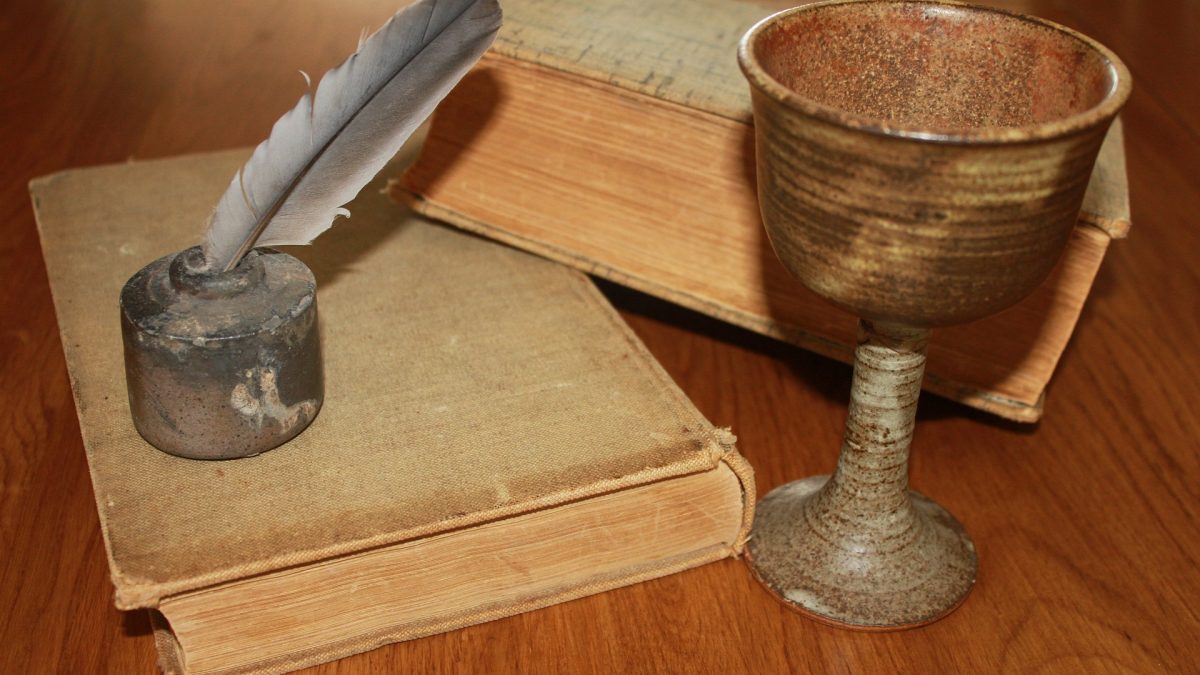The keyboard or pad may seem like a more efficient way to write. We think faster than we can write, so it might seem like it makes sense to use a device that can record these ideas as fast as we can think them, or as close as we can get to recording them that quickly. The problem is that those ideas that come to mind quickly are probably ideas that are not worth recording and reflecting upon. These thoughts are snippets of what we have heard spoken in conversations, television programs, and various forms of news or social media. There is nothing creative or unusual about them. They are merely floating in our conscious mind to be reiterated in different forms again and again.
Now, when you are in the beginning stages of writing your book, or any type of writing for that matter, you will want to slow down. In fact, you might want to take a reading and social media fast. The events in our world, the conversations, the instant gratification that we desire when it comes to information and knowledge, actually slows down the creative process.
Writing is the highest form of creativity. But that creativity cannot come in the blink of an eye. It needs to be weaned from our subconscious mind. That means we need to slow down and spend time thinking, contemplating, and mediating upon our message.

Writing with pen and paper helps trigger the mind-hand connection!
Yes, writing your book is a message! What is the message that you want to share?
To begin, we will want to wean ourselves from our machines, those devices that bring us too much information at too fast of a speed. It is then that we will be able to truly discover what we want to say.
Writing, at least in the beginning stages, is best done the old-school way, with pen and paper.
BECAUSE PEN PLUS PAPER EQUALS POWER!
Writing with pen and paper triggers our creativity which then leads us to discovery.
There is a connection between hand-eye coordination, the putting of pen to paper, and creativity. When you write by hand, you touch the pen, and the pen touches the paper. Your writing becomes slow, more deliberate, which helps you tap into your subconscious mind, the seat of your creativity.
In fact, the slower you write during the beginning of the writing process, the more deliberate your writing may be.

Writing is a form of meditation!
In an article written by Nancy Olson for Forbes entitled, “Three Ways That Handwriting with A Pen Positively Affects Your Brain,” the author states that “handwriting unleashes creativity not easily accessed in any other way” and that “handwriting also increases neural activity in certain sections of the brain.” Olson refers to a 2012 study led by Karin James at the University of Indiana on preliterate children and writing. In this study, Dr. James concluded that the brain scans of children who had drawn a letter freehand revealed increased activity in the left fusiform gyrus, the inferior frontal gyrus, and the posterior parietal cortex…. The children who traced a letter or typed it, showed no such effect.” Interestingly, Dr. James “attributes the differences to messiness inherent in free-form handwriting” to learning. (Maria Konnikova, “What’s Lost as Handwriting Fades” New York Times).
Another study performed by “Virginia Berninger, a psychologist at the University of Washington, demonstrated via brain scanning that printing, cursive writing, and typing on a keyboard are all associated with distinct and separate brain patterns, and each results in a distinct end product. When children composed text by hand, they not only consistently produced more words more quickly…but expressed more ideas.” (Maria Konnikova, “What’s Lost as Handwriting Fades” New York Times).
Lastly, Dr. Claudia Aguirre, a neuroscientist, states in an article entitled, “Does Writing by Hand Sharpen your Creativity”, which appeared on the website, headspace.com, that “there is something deeply meditative and artistic that has driven art forms involving handwriting across cultures, such as calligraphy.” She states, “perhaps the greatest thing about handwriting is that the very act of doing it [cursive writing] forces you to focus on what’s important. It is, in essence, a moment of mindfulness.”
With the above ideas in mind, one may consider that writing by hand could be a form of meditation, of seeking and discovering what is within, of connection and creativity, as well as an artistic form.
That is when authors can truly tap into the seat of their creativity, for creativity leads to discovery, and discovery to the message.







